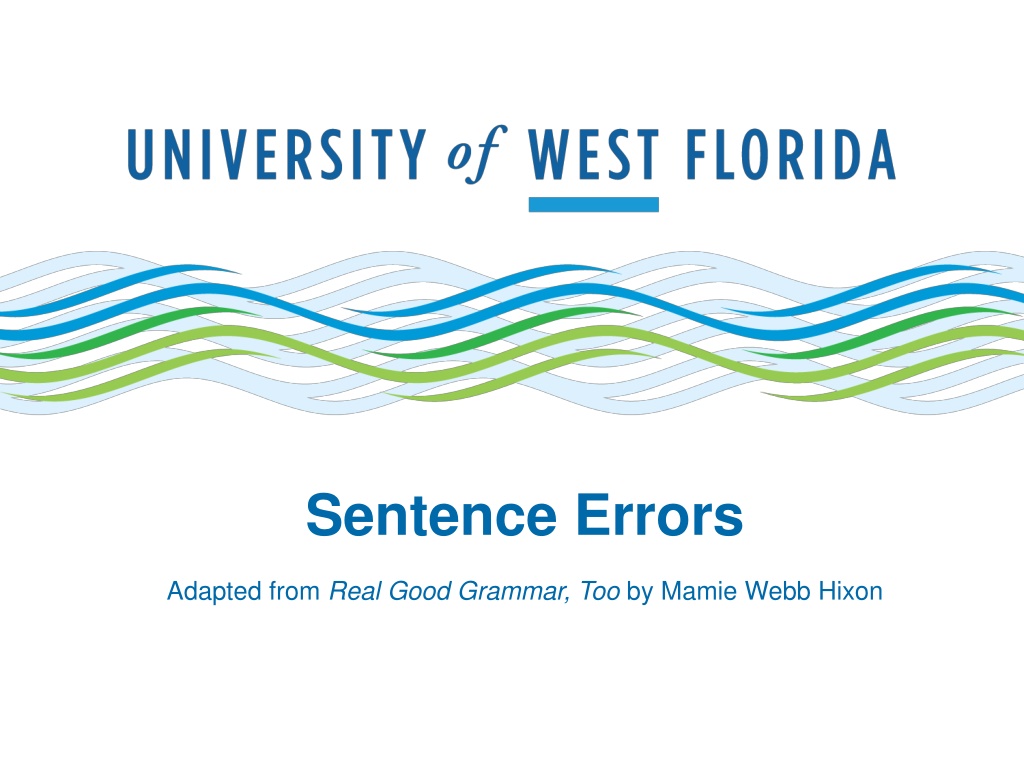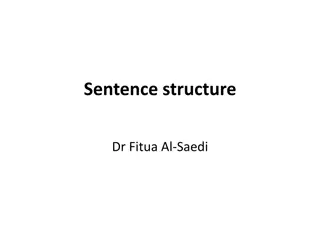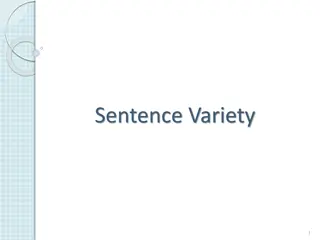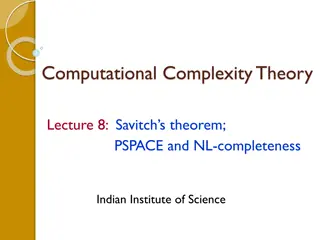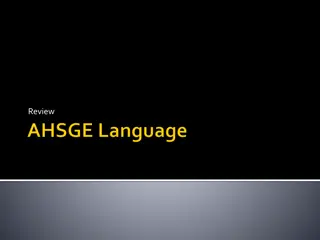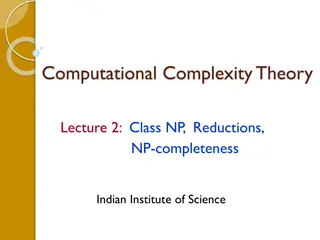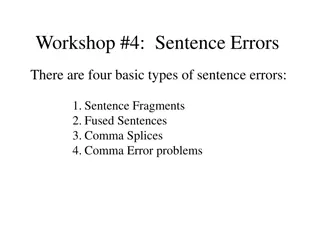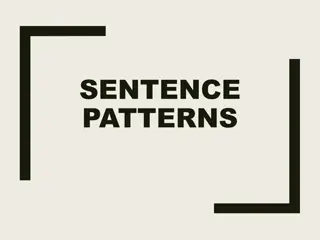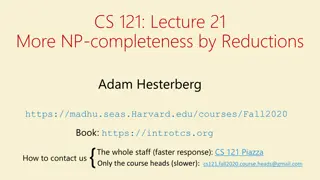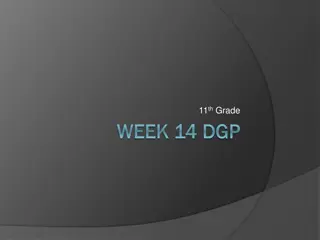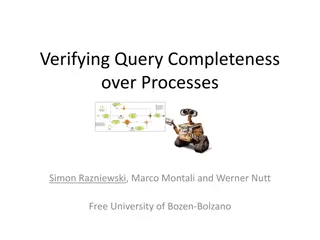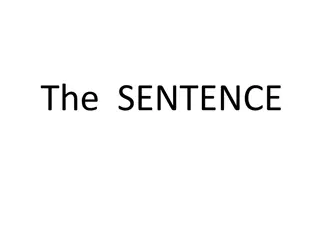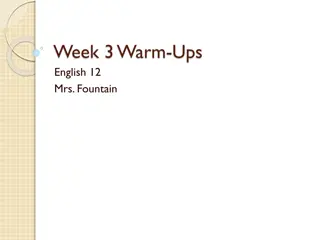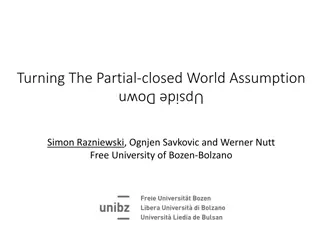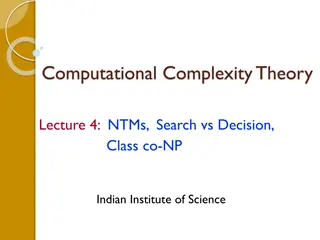Understanding Sentence Structure: Clarity and Completeness
Learn the essentials of sentence structure, including the components that make up a complete sentence, the difference between sentences and fragments, and how to revise fragments for coherence. Delve into the impact of sentence length on conveying ideas effectively.
Download Presentation

Please find below an Image/Link to download the presentation.
The content on the website is provided AS IS for your information and personal use only. It may not be sold, licensed, or shared on other websites without obtaining consent from the author. Download presentation by click this link. If you encounter any issues during the download, it is possible that the publisher has removed the file from their server.
E N D
Presentation Transcript
Sentence Errors Adapted from Real Good Grammar, Too by Mamie Webb Hixon
First of all, what is a sentence? A true sentence must have the following: a subject a verb a complete thought If a group of words is missing any of these components, it is not a real sentence.
Are long sentences better than short ones? A sentence can be short or long; it just depends on what idea the sentence is intended to convey. I ran. I ran down the long, dark hallway, dodging stacks of building materials as I went, and burst through the fire exit, disoriented and exhausted, blinded by the sudden shot of sunlight, but emboldened by what I had just witnessed. In the first sentence, I is the subject, and ran is the verb. If all the writer wants the reader to know is that the subject ran, these two words are sufficient make up a complete thought. In the second sentence, I is still the subject, and ran is still the verb. However, the point of this sentence is to convey a very specific image. Therefore, this sentence requires more than just the subject and the verb to complete the thought. Everything that follows the word ran contributes to the completion of the idea the sentence is intended to convey.
What is a sentence fragment? A fragment is not a true sentence, though it is capitalized and punctuated as if it were a sentence: If there are no more malpractice suits, the hospital will win its license renewal. However, no one can be sure of the hospital s future. Because patients are very quick to go to court. The first sentence is fine, but the second sentence is a fragment despite the subject patients and the verb are. The word because creates an expectation for some sort of effect, but the sentence stops short of fulfilling that expectation. Therefore, the second sentence does not convey a complete thought.
Wait. Is that a fragment? A group of words can contain a noun that looks like a subject and a verb and still be a fragment: Local agencies will become overcrowded and ineffective. Unless the number of mental health services is increased. Number is a noun in what could be the subject slot, and is is a verb, but the word unless creates an expectation that the sentence does not fulfill: The number of mental health services will be increased, or what? This sentence does not contain a complete thought.
Okay. How do I revise a fragment? One way to revise a fragment is to connect the fragment to the preceding sentence, which is most likely the sentence from which the fragment is disconnected: In August of 1992, Hurricane Andrew hit Florida and Louisiana with winds that clocked 175 mph. The country s worst natural disaster of the century. The second part is a fragment because it has no verb. By connecting the second part to the first part, we let the first part provide the subject ( Hurricane Andrew ) and the verb ( hit ), and the part that was previously a fragment becomes a completing thought: In August of 1992, Hurricane Andrew hit Florida and Louisiana with winds that clocked 175 mph, the country s worst natural disaster of the century.
Is there another way to revise a fragment? Another way to revise a fragment is to turn the fragment into a stand-alone sentence: Prospectors invaded the newly discovered gold field. Some in wagons, some on horseback, and a few in heavily laden canoes. The second part is a fragment because it has no verb. We can still have two separate sentences here; we just have to provide a verb to make the second part a sentence: Prospectors invaded the newly discovered gold field. Some came in wagons, some on horseback, and a few arrived in heavily laden canoes.
Are all fragments wrong? Writers sometimes use fragments deliberately for emphasis or to convey a sense of excitement. The intentional fragments below are from advertising print media about the 2010 movie The Social Network: Splendid entertainment from a master storyteller. A soon-to-be classic. One of the most mesmerizing stories of the decade. Achieves Shakespearean dimensions.
What is a run-on sentence? A run-on is a sentence construction error that occurs when two independent clauses (complete sentences) are not separated by a coordinating conjunction or any punctuation. Walk with your feet dance with your heart. Walk with your feet is a complete sentence. Dance with your heart is also a complete sentence. We need some punctuation between the two sentences. Without punctuation, we have a run-on.
Do run-on sentences run on and on? A long sentence is not necessarily a run-on sentence. The following is just a long sentence, not a run-on: Black-bearded, pale-faced, with thin, compressed lips, aquiline nose, and dark, piercing eyes, he slouched in his weather- stained uniform; yet he was greatly beloved by the few who knew him best, and he was gifted with that strange power of commanding measureless devotion from the thousands whom he ruled with an iron hand.
Are run-on sentences long? A run-on sentence can be very short. I ll cut you choose. I ll cut is a complete sentence. You choose is also a complete sentence. Because there is no punctuation between them, this is a run-on sentence.
How do I revise a run-on sentence? One way to revise a run-on is to add a period and a capital letter. Thoreau went into the woods to simplify his life he also wanted to live close to nature. Thoreau went into the woods to simplify his life is a complete sentence. He also wanted to live close to nature is also a complete sentence. Without punctuation, we have a run-on sentence. Correct the run-on by making this group of words two sentences. Thoreau went into the woods to simplify his life. He also wanted to live close to nature.
Is there another way to revise a run-on sentence? A second way to revise a run-on sentence is to add a semicolon. Some working people get a raise every year however, inflation often leaves them with no increase in buying power. Some working people get a raise every year is a complete sentence. However, inflation often leaves them with no increase in buying power is also a complete sentence. Without punctuation, we have a run-on sentence. Correct the run-on by placing a semicolon between the two sentences. Some working people get a raise every year; however, inflation often leaves them with no increase in buying power.
What is a comma splice? A comma splice occurs when two complete sentences are separated only by a comma. Wearing a seat belt is not just a good idea, it s the law. Wearing a seat belt is not just a good idea is a complete sentence. It s the law is also a complete sentence. If we want to keep them both in one sentence, we need more than just a comma to hold them together.
How do I revise a comma splice? One way to revise a comma splice is to add a period and a capital letter. Ethan didn t show up for class until it was half over, then he asked the professor if he could leave early. Ethan didn t show up for class until it was half over is a complete sentence. Then he asked the professor if he could leave early is also a complete sentence. We can fix the comma splice by turning the sentence into two sentences. Ethan didn t show up for class until it was half over. Then he asked the professor if he could leave early.
How else can I revise a comma splice? Another way to revise a comma splice is to replace the comma with a semicolon. No one knows where Alex went, she just resigned from her job and took to the open road on her scooter. No one knows where Alex went is a complete sentence. She just resigned from her job and took to the open road on her scooter is also a complete sentence. We can fix the comma splice by turning the comma into a semicolon. No one knows where Alex went; she just resigned from her job and took to the open road on her scooter.
